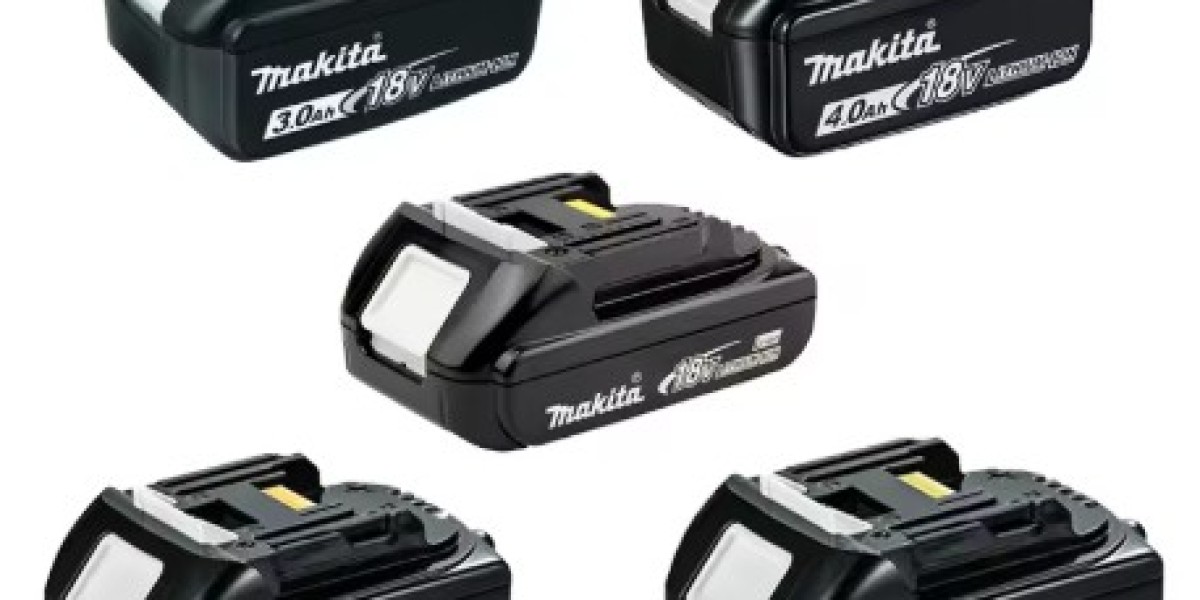Power tool performance depends heavily on the battery behind it. A strong motor is useless without the right energy source. Makita batteries form the backbone of the company’s cordless system. They deliver consistent power, manage heat, and communicate with tools through built-in electronics. To understand compatibility, users must know voltage classes, battery chemistry, and the role of Makita’s LXT system. This guide explains the technical side of these batteries, how they interact with each Makita power tool, and what makes them different from competitors.
Battery Chemistry and Cell Technology
Most modern Makita batteries like the Makita 18V battery, rely on lithium-ion chemistry. Lithium-ion cells offer higher energy density than older nickel-cadmium or nickel-metal hydride packs. This means lighter packs with more runtime. A standard Makita pack uses cylindrical cells arranged in series and parallel connections.
For example, an 18V pack uses five cells in series. Each cell is rated at 3.6V nominal, 4.2V max when fully charged, and about 3.0V when discharged. Together, they deliver the working voltage needed by cordless tools. Adding cells in parallel increases capacity, which defines amp-hour (Ah) ratings. A 5.0Ah pack uses more cells in parallel than a 3.0Ah pack. This cell configuration is the foundation of Makita’s design.
Voltage Compatibility
Voltage is one of the main factors that determine compatibility. Makita organizes its cordless lineup into separate voltage classes. The most common are 12V CXT, 18V LXT, 36V, and now the 40V XGT platform. Tools and chargers within each class are designed to work only with matching voltage packs.
Trying to cross-use batteries of different voltages is not possible. A 12V pack cannot run an 18V tool because the motor and electronics are built around a specific energy input. Makita designs housings, slides, and terminals differently across lines to prevent mismatch. Users must always match the battery platform to the tool platform.
Amp-Hour Ratings and Runtime
Within the same voltage class, different amp-hour ratings provide more or less runtime. An amp-hour represents the amount of current a pack can deliver over time. For example, a 2.0Ah battery delivers 2 amps for one hour, while a 5.0Ah pack delivers 5 amps for one hour under the same load.
Larger packs extend working time, but they also weigh more. A framing carpenter might prefer a 6.0Ah pack to avoid constant swaps on a saw, while a service technician working overhead might choose a smaller 2.0Ah pack for reduced weight. This flexibility is key to matching the right battery to the right job.
The Role of the LXT Platform
The LXT platform has become Makita’s most widespread battery system. It covers hundreds of tools ranging from drills and grinders to saws and outdoor equipment. LXT packs are designed to fit any LXT Makita power tool, making them highly versatile. The platform ensures that users can switch batteries across multiple tools without needing separate systems.
A major technical feature of the LXT packs is Star Protection. This system uses built-in electronics that allow real-time communication between the battery and the tool. It prevents overloading, overheating, and over-discharging. These protections not only extend the battery’s lifespan but also prevent motor damage in the tools.
Charging Specifications
Charging speed plays a big role in workflow. Makita’s rapid chargers use built-in fans to cool both the charger and the battery during the process. Cooling allows faster charging without overheating the cells.
For example, a 5.0Ah pack charges in about 45 minutes on a rapid charger, while a 3.0Ah pack may charge in around 30 minutes. The integrated communication system also monitors voltage and temperature, adjusting current flow as needed to keep cells safe. This attention to charging specifications helps keep downtime low on busy job sites.
Compatibility with Older Tools
Compatibility across generations is a concern for long-time users. Early Makita cordless tools used pod-style nickel-based packs. These are not cross-compatible with modern lithium-ion slide packs. However, within the lithium-ion family, most LXT packs will work with older 18V LXT tools.
There are exceptions, especially with certain compact tools or early models that draw power differently. But in most cases, if the tool belongs to the LXT system, modern lithium packs fit and function correctly. This backward support makes it easier for users to upgrade without replacing entire toolkits.
Weight and Balance
Technical specifications go beyond voltage and runtime. The physical weight of a battery changes how a tool feels in hand. A larger 6.0Ah pack may extend runtime, but it also adds strain in repetitive or overhead tasks. Conversely, compact 2.0Ah packs reduce fatigue but require more frequent swaps.
Tool balance also matters. For example, a drill with a heavy battery may tip backward when set on a flat surface. A circular saw, on the other hand, may benefit from the added counterweight. Understanding how pack size changes handling helps users select the right battery for specific tasks.
Temperature and Environmental Factors
Lithium-ion cells are sensitive to temperature. High heat accelerates wear, while cold temperatures reduce performance. Makita incorporates temperature monitoring in both batteries and chargers. This prevents charging in extreme conditions, protecting the cells.
For best results, batteries should be stored at moderate room temperature. Leaving packs in a hot vehicle or freezing garage reduces lifespan. Job sites with heavy dust or moisture also require care. Makita packs are built with protective casing, but exposure to water or heavy dirt should be avoided whenever possible.
The Example of the Makita 18V Battery
The Makita 18V battery line is the most common among users worldwide. It powers hundreds of tools under the LXT platform. With amp-hour ratings ranging from compact 2.0Ah to large 6.0Ah, it balances compatibility and runtime flexibility. Electronics inside each pack manage heat, current flow, and safety features, making them reliable for professional-grade demands.
For contractors and homeowners alike, the 18V system offers a stable and proven solution. Its broad compatibility makes it a core part of the Makita cordless ecosystem.
Maintenance and Replacement
Every battery has a limited lifespan, usually measured in charge cycles. A cycle is one full discharge and recharge. Most lithium-ion packs last between 300 and 500 cycles before capacity drops noticeably. Signs of wear include shorter runtime, slower charging, or tools shutting down early.
When this happens, users need a Makita battery replacement. Replacements should be genuine, since off-brand packs often lack safety electronics and may fail faster. Using authentic packs ensures protection systems function as intended, preserving both battery and tool health.
Future Directions in Makita Batteries
Makita continues to develop new systems, with the 40V XGT platform targeting high-demand industrial applications. These packs deliver more current for larger motors without relying on dual 18V setups. While LXT remains the mainstay for most users, XGT shows the company’s direction toward higher-capacity cells and greater tool performance.
Future designs will likely include smarter electronics, faster charging, and longer-lasting chemistries. Yet, backward compatibility and user flexibility remain central to Makita’s strategy.
The Final Takeaway
The performance of any Makita power tool depends on the right battery. By understanding chemistry, voltage classes, amp-hour ratings, and compatibility rules, users can make better choices. Makita batteries are designed to protect tools, deliver stable output, and match a wide range of workloads.
From the versatile LXT packs to the high-capacity XGT line, Makita provides clear specifications that help users plan their tool setups effectively. Choosing the right pack, maintaining it properly, and replacing it with genuine units ensures long-term reliability for both the battery and the tool.





